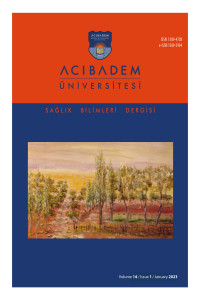Abstract
References
- [1] American Psychiatric Association. "Pedophilia." Diagnostic and Statistical Manual of Mental Disorders (2000): 571-572.
- [2] Paulesu, Eraldo, et al. "Is developmental dyslexia a disconnection syndrome? Evidence from PET scanning." Brain 119.1 (1996): 143-157.
- [3] Thornton, Kirtley E., and Dennis P. Carmody. "Electroencephalogram biofeedback for reading disability and traumatic brain injury." Child and Adolescent Psychiatric Clinics 14.1 (2005): 137-162.
- [4] Klimesch, Wolfgang, et al. "Alpha and beta band power changes in normal and dyslexic children." Clinical Neurophysiology 112.7 (2001): 1186-1195.
- [5] Walker, Jonathan E., and Charles A. Norman. "The neurophysiology of dyslexia: A selective review with implications for neurofeedback remediation and results of treatment in twelve consecutive patients." Journal of Neurotherapy 10.1 (2006): 45-55.
- [6] Breteler, Marinus HM, et al. "Improvements in spelling after QEEG-based neurofeedback in dyslexia: A randomized controlled treatment study." Applied psychophysiology and biofeedback 35.1 (2010): 5-11.
- [7] Coben, Robert, et al. "The impact of coherence neurofeedback on reading delays in learning disabled children: A randomized controlled study." NeuroRegulation 2.4 (2015): 168-168.
- [8] Eroğlu, Günet, et al. "A mobile app that uses neurofeedback and multi-sensory learning methods improves reading abilities in dyslexia: A pilot study." Applied Neuropsychology: Child (2021): 1-11.
- [9] Kober, Silvia E., et al. "BCI and games: playful, experience-oriented learning by vivid feedback?." Brain–Computer Interfaces Handbook. CRC Press, 2018. 209-234.
- [10] Niv, Sharon. "Clinical efficacy and potential mechanisms of neurofeedback." Personality and Individual Differences 54.6 (2013): 676-686.
- [11] Nazari, Mohammad Ali, et al. "The effectiveness of neurofeedback training on EEG coherence and neuropsychological functions in children with reading disability." Clinical EEG and neuroscience 43.4 (2012): 315-322.
Abstract
- Auto Train Brain is a mobile app that was specifically developed for dyslexic children to increase their reading speed and reading comprehension. In the original mobile app, there was only one unique neurofeedback user interface that provided visually and audibly rewarding feedback to the subject with a red-green colored arrow on the screen. Later on, new modules are added to the app with the requests of the end-users. These are the “youtube” video-based interface, “Spotify” auditory-based interface, and arrow interface which gives visual and auditory cues. In this research, we have compared the efficacy of the neurofeedback rewarding interfaces. The experiment group consists of 20 dyslexic children aged 7-to 10 (15 males, 5 females) who have preferred one interface over the others each day and used it at home for more than six months. The result indicates that though the “youtube” interface is liked most by the participants, the arrow-based simple neurofeedback interface reduces theta brain waves more than other rewarding schemes. On the other hand, “youtube” and “spotify” based interfaces increase Beta band powers more than the arrow interface in the cortex. The ”Spotify” user interface improves the fast brain waves more on the temporal lobes (T7 and T8) as the feedback given was only auditory.
Keywords
References
- [1] American Psychiatric Association. "Pedophilia." Diagnostic and Statistical Manual of Mental Disorders (2000): 571-572.
- [2] Paulesu, Eraldo, et al. "Is developmental dyslexia a disconnection syndrome? Evidence from PET scanning." Brain 119.1 (1996): 143-157.
- [3] Thornton, Kirtley E., and Dennis P. Carmody. "Electroencephalogram biofeedback for reading disability and traumatic brain injury." Child and Adolescent Psychiatric Clinics 14.1 (2005): 137-162.
- [4] Klimesch, Wolfgang, et al. "Alpha and beta band power changes in normal and dyslexic children." Clinical Neurophysiology 112.7 (2001): 1186-1195.
- [5] Walker, Jonathan E., and Charles A. Norman. "The neurophysiology of dyslexia: A selective review with implications for neurofeedback remediation and results of treatment in twelve consecutive patients." Journal of Neurotherapy 10.1 (2006): 45-55.
- [6] Breteler, Marinus HM, et al. "Improvements in spelling after QEEG-based neurofeedback in dyslexia: A randomized controlled treatment study." Applied psychophysiology and biofeedback 35.1 (2010): 5-11.
- [7] Coben, Robert, et al. "The impact of coherence neurofeedback on reading delays in learning disabled children: A randomized controlled study." NeuroRegulation 2.4 (2015): 168-168.
- [8] Eroğlu, Günet, et al. "A mobile app that uses neurofeedback and multi-sensory learning methods improves reading abilities in dyslexia: A pilot study." Applied Neuropsychology: Child (2021): 1-11.
- [9] Kober, Silvia E., et al. "BCI and games: playful, experience-oriented learning by vivid feedback?." Brain–Computer Interfaces Handbook. CRC Press, 2018. 209-234.
- [10] Niv, Sharon. "Clinical efficacy and potential mechanisms of neurofeedback." Personality and Individual Differences 54.6 (2013): 676-686.
- [11] Nazari, Mohammad Ali, et al. "The effectiveness of neurofeedback training on EEG coherence and neuropsychological functions in children with reading disability." Clinical EEG and neuroscience 43.4 (2012): 315-322.
Details
| Primary Language | English |
|---|---|
| Subjects | Neurosciences |
| Journal Section | Research Article |
| Authors | |
| Early Pub Date | November 15, 2022 |
| Publication Date | January 1, 2023 |
| Submission Date | June 27, 2022 |
| Published in Issue | Year 2023Volume: 14 Issue: 1 |


